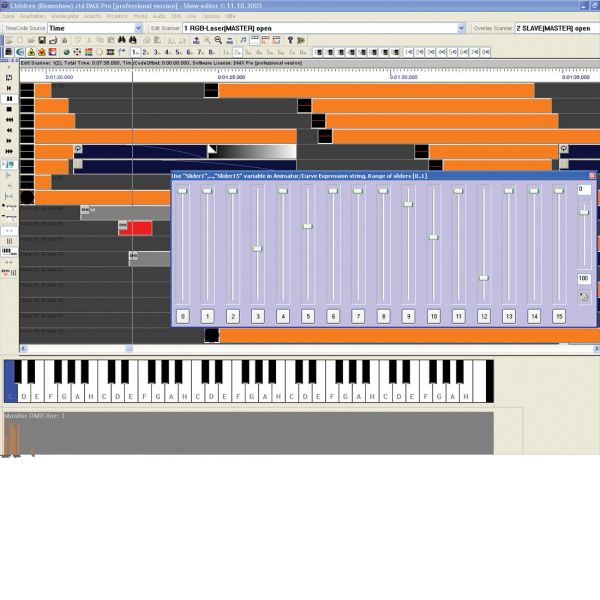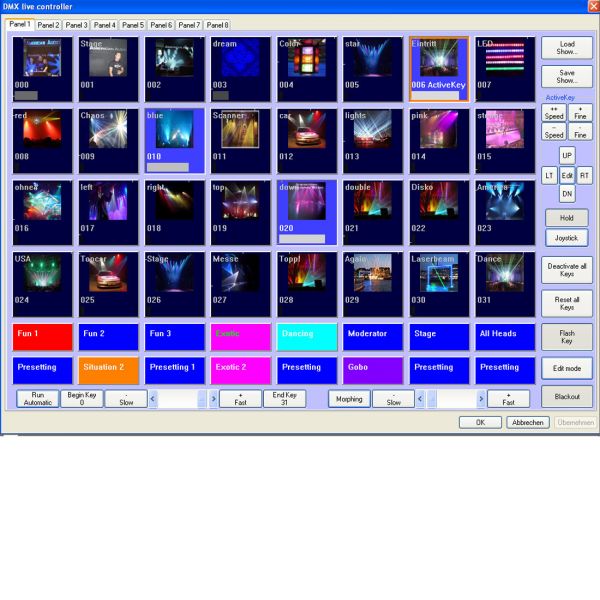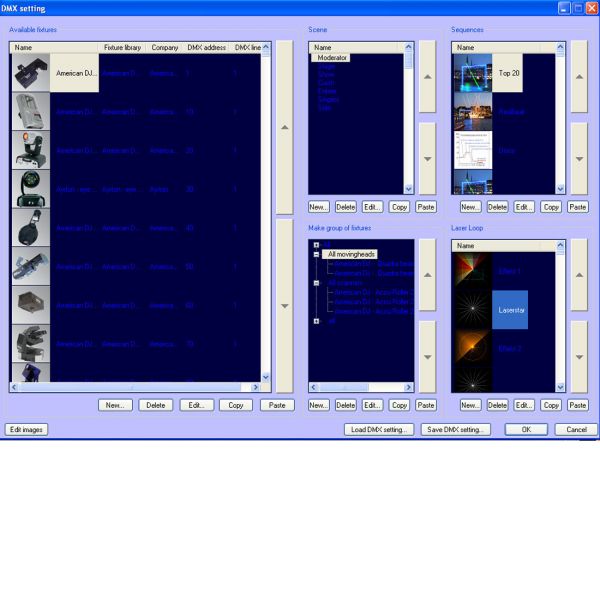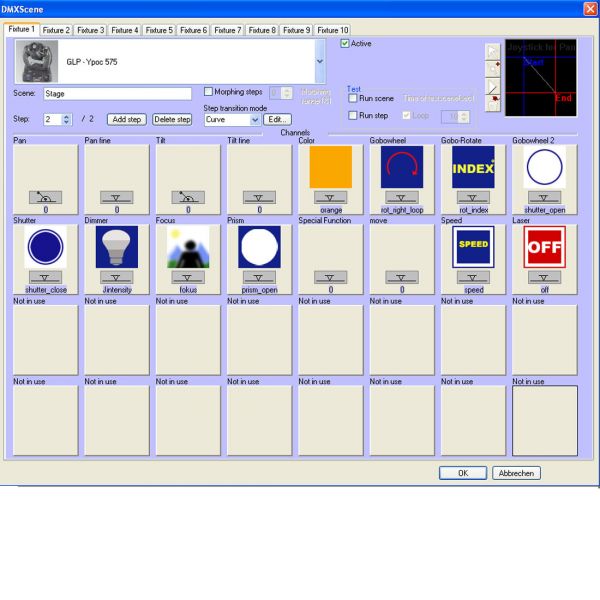





The professional intelligent lighting software.
PHOENIX-DMX is one of the most powerful software solutions existing for controlling intelligent lighting. With our product it is extremely easy to program complex light shows already after only a short introduction. It is irrelevant if you want to program a static scene or a complex pattern with moving heads, scanners, synchronized to sound, video or pyrotechnique and Laser, PHOENIX-DMX is the right tool to use, made by professionals for professionals. All media types are integrated in PHOENIX-DMX, there are no technical limitations to create the right show in a snap. Now you are finally able to accommodate your clients ideas and proposals. You can integrate interactive controls like joysticks, sliders, mouse actions and MIDI compatible devices in the moving and controlling pattern of your programmes light show to make every event unique and unforgetable.
PHOENIX-DMX is capable of controlling not only 4 seperately assignable DMX streams with 512 addresses each, so a total of 2048 DMX addresses but also:
- 2048 DMX input channels
- 128 independent TTL channels
- MIDI
- SMPTE
- And much much more..
The DMX output of PHOENIX-DMX is done by the international
standard XLR 3-pin connection.
Features:
- Auto-Animation: Using curve animation and interactive sliders, every
parameter is controllable
- Audio Synchronization (CD, MIDI, Internal clock, SMPTE, WAVE,
MP3) Audio synchronization can be achieved using the CD-ROM
drive and a common audio CD, a file in wave (.wav) or MP3 format or
other external devices connected to the computer in millisecond
precision. Other external devices could be used for synchronization
via SMPTE timecode format if a windows compatible timecode
reading device is installed.The functionality of the wave-analyzer
allows total visual programming help.
- Interactive control devices (Mouse, Keyboard, MIDI compatible input
devices (slider, keyboards), Joysticks) Every DMX channel can be
assigned to interactive input devices for maximum control during the
show.
- Maximum number of fixtures (2048) One master computer can
control up to 4x512 fixtures, depending on the hardware configuration
- Tracks (64) Up to 64 parallel tracks are allowed to assign
movements, gobos, color changes etc.
- Sub tracks: 32 per track. Up to 32 sub tracks can be defined in one
single track for programming control blocks. In total a number of 2048
tracks (32*64) are available.
- DMX morphing. Every channel of a DMX effect can be morphed to a
target DMX effect. This allows the user to morph between multiple
scenes and DMX pictures. Of course this function can be disabled if
unwanted.
- Automation languages: Visual Basic Scripting (VBS). VBS is an
easy understandable programming language for programming total
automation of your show.
- Output refresh rate. Up to 30x per second. DMX output is refreshed
at a rate of 30 times per second to allow the most smoothest moving
patterns.
- Real time calculation. All parameter calculations are performed in
real-time.
- Automatic Chase programs. A number of predefined chase
programs are available in the software. Own chase programs are
easy to define evn for novice users
- Scenes - Unlimited DMX scenes can be programmes for unlimited
DMX fixtures
- DMX pictures. Unlimited combinations of DMX fixtures, groups or
functions can be programmed and stored.
- Intelli-move. Programmed moving patterns are transferable to
multiple other fixtures, or groups of fixtures using offsets. This function
allow the user to programm waves and strobe effects chases or any
other function like rainbow color chasing easily.
- Fixture visualization. All DMX fixtures are displayed as an bitmap
picture for easy navigation and programming.
- Live - control. Pre-programs scenes, pictures or DMX functions are
selectable via touchscreen, keyboard or other input devices on the
fly. MULTIPLE selections can be made for simultaneous output of
different DMX scenes or pictures. PHOENIX DMX will compensate
DMX channel collisions automatically.
- Output standard. All output signals are available via a 3 pin DMX -
XLR socket. The pinning is equivalent to the DMX standard (pin 1=
GND, pin 2= - DMX, pin 3= + DMX)
Specifications and documentation subject to change without notice

